Year 7 Order of Operations Worksheets
Brackets (A)
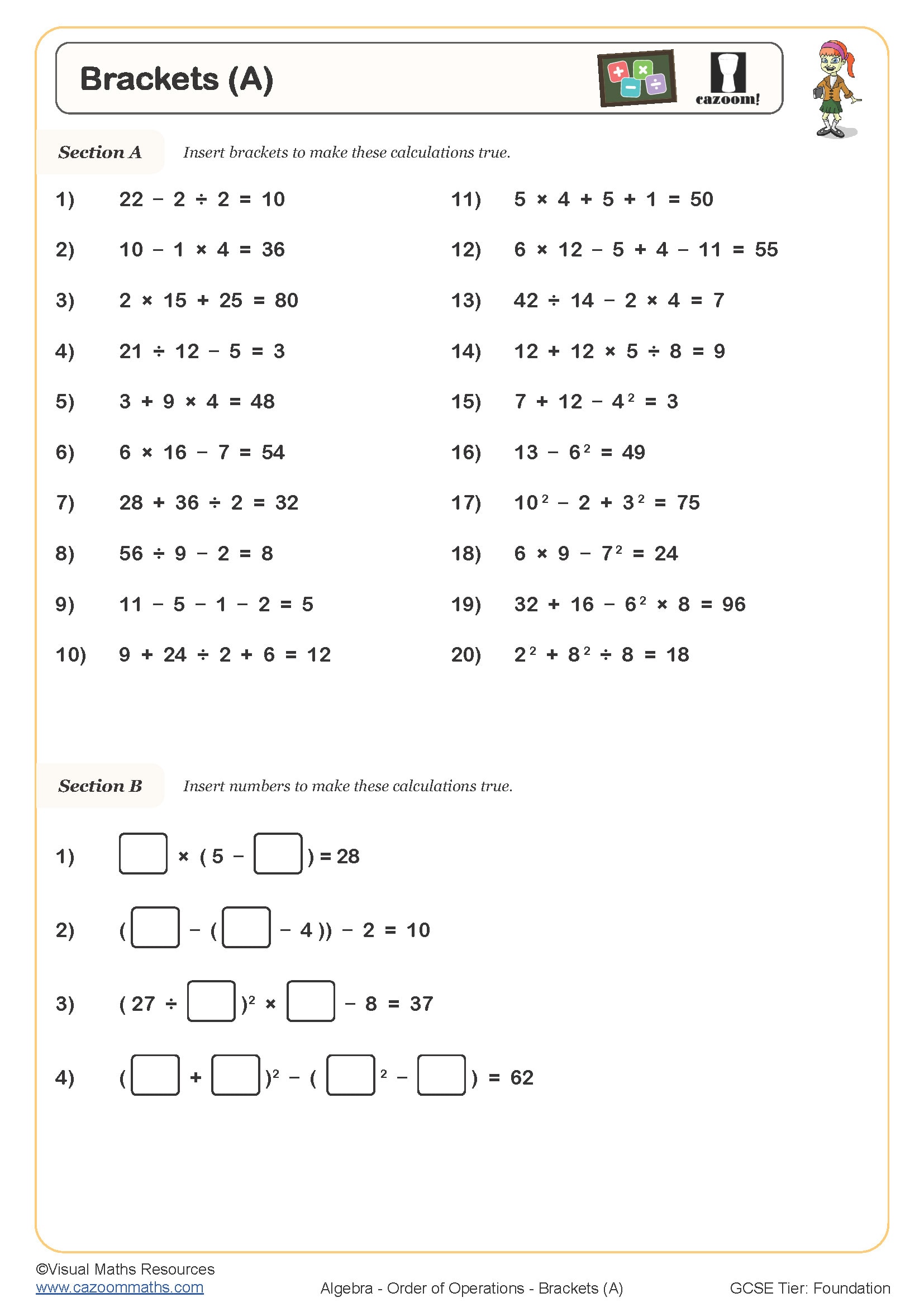
Brackets (B)
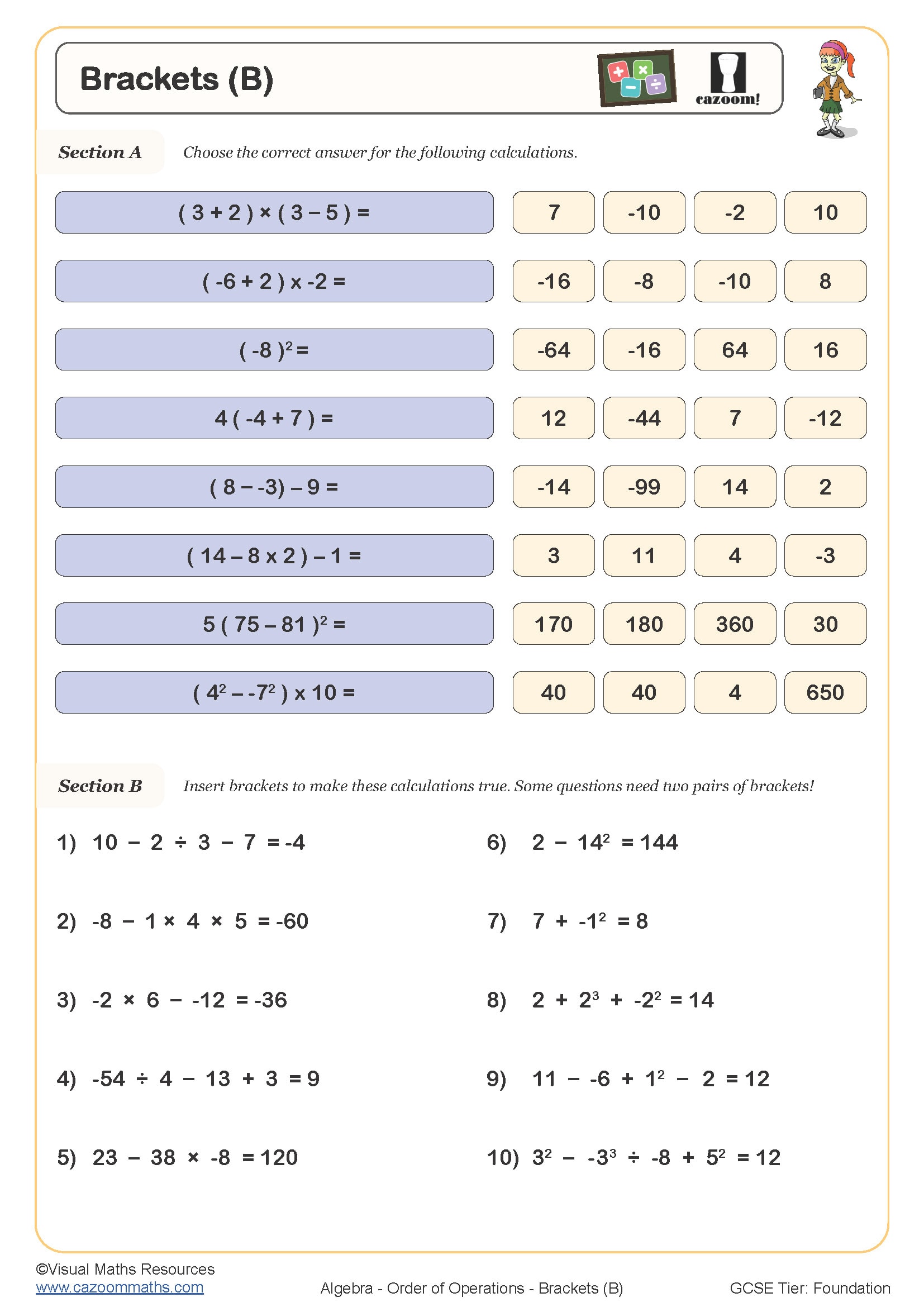
Calculator Predictions
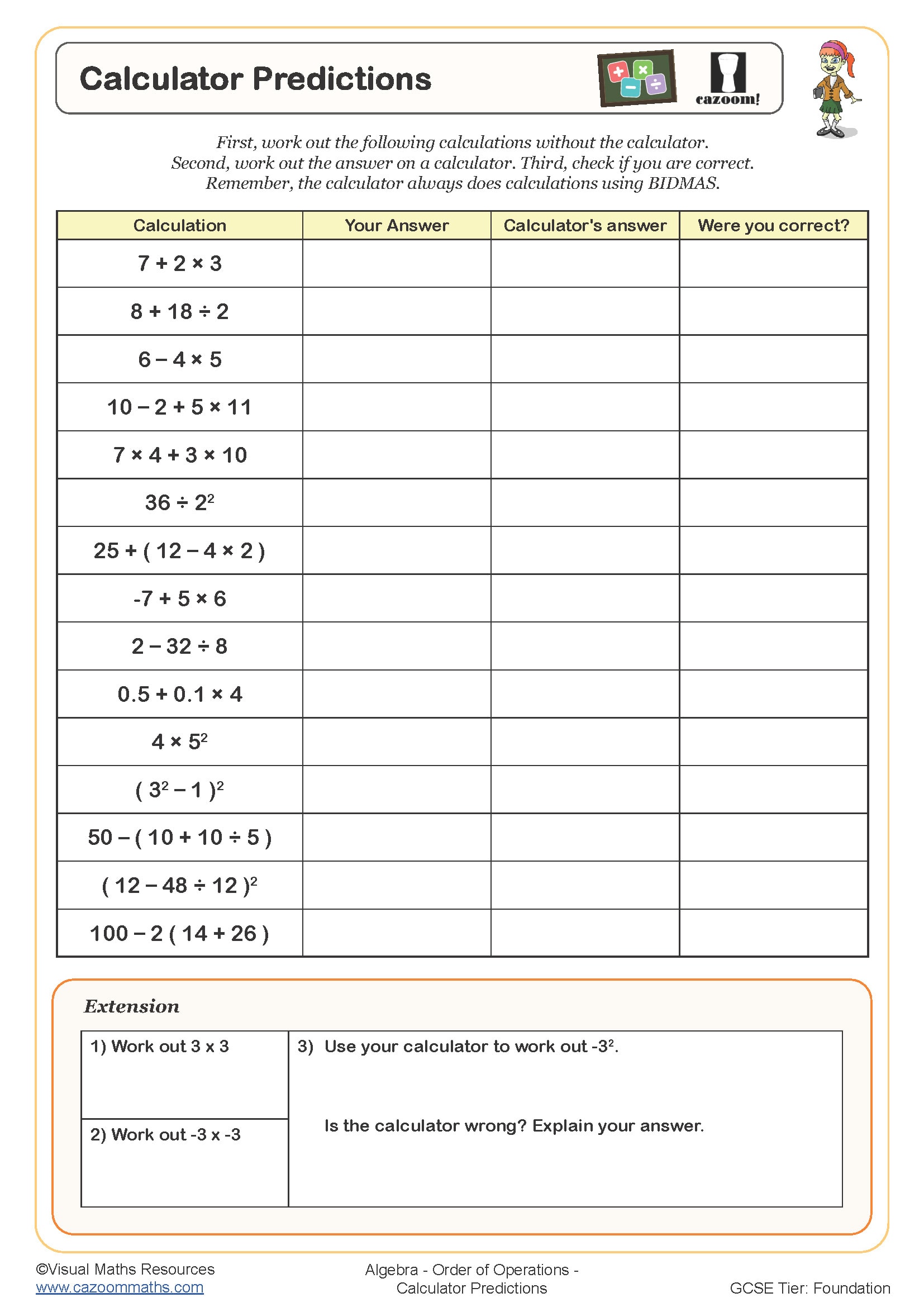
Order of Operations - Calculating with Indices

Order of Operations - Introducing Brackets and Indices
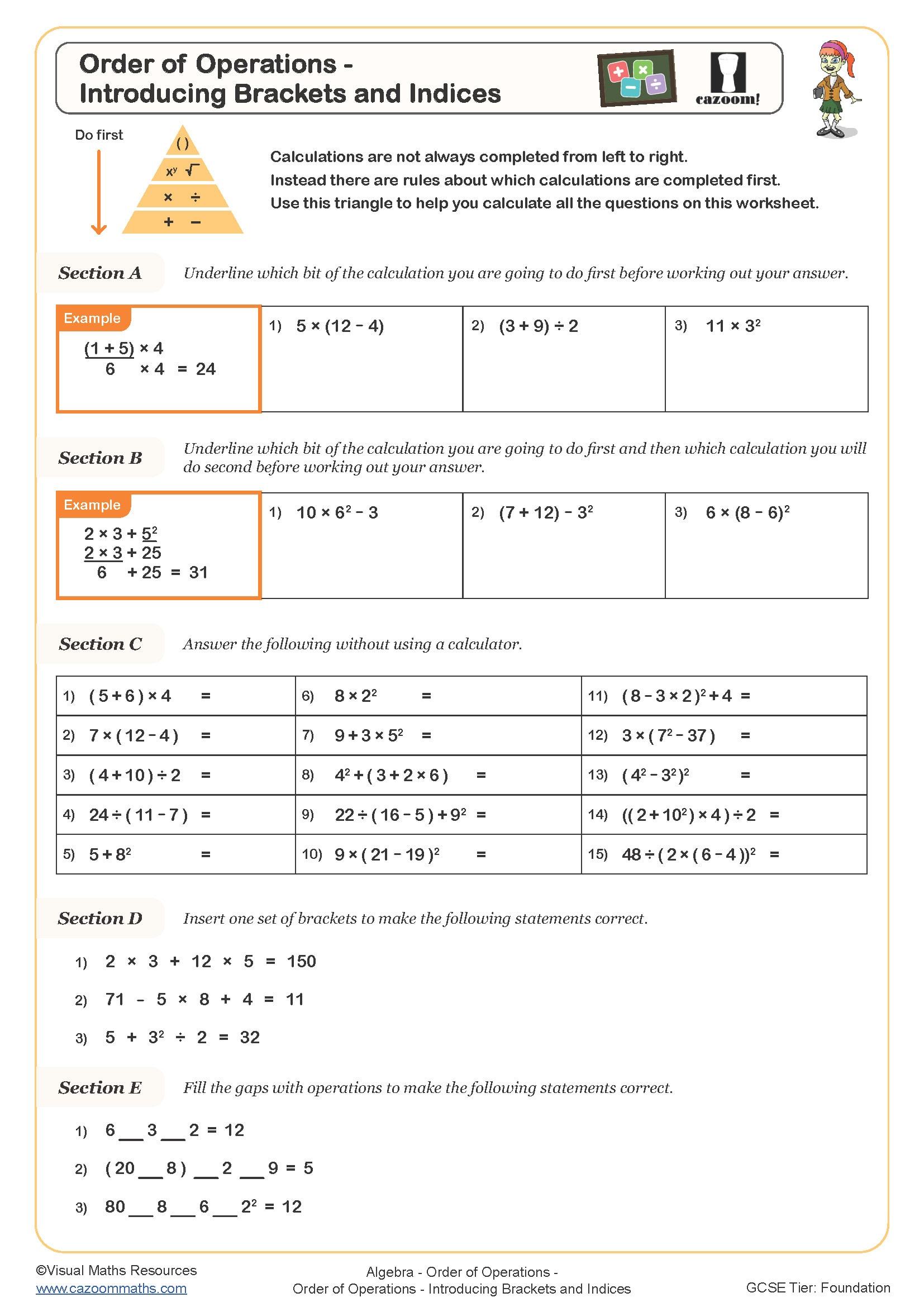
Order of Operations - Multiplication, Division, Addition and Subtraction
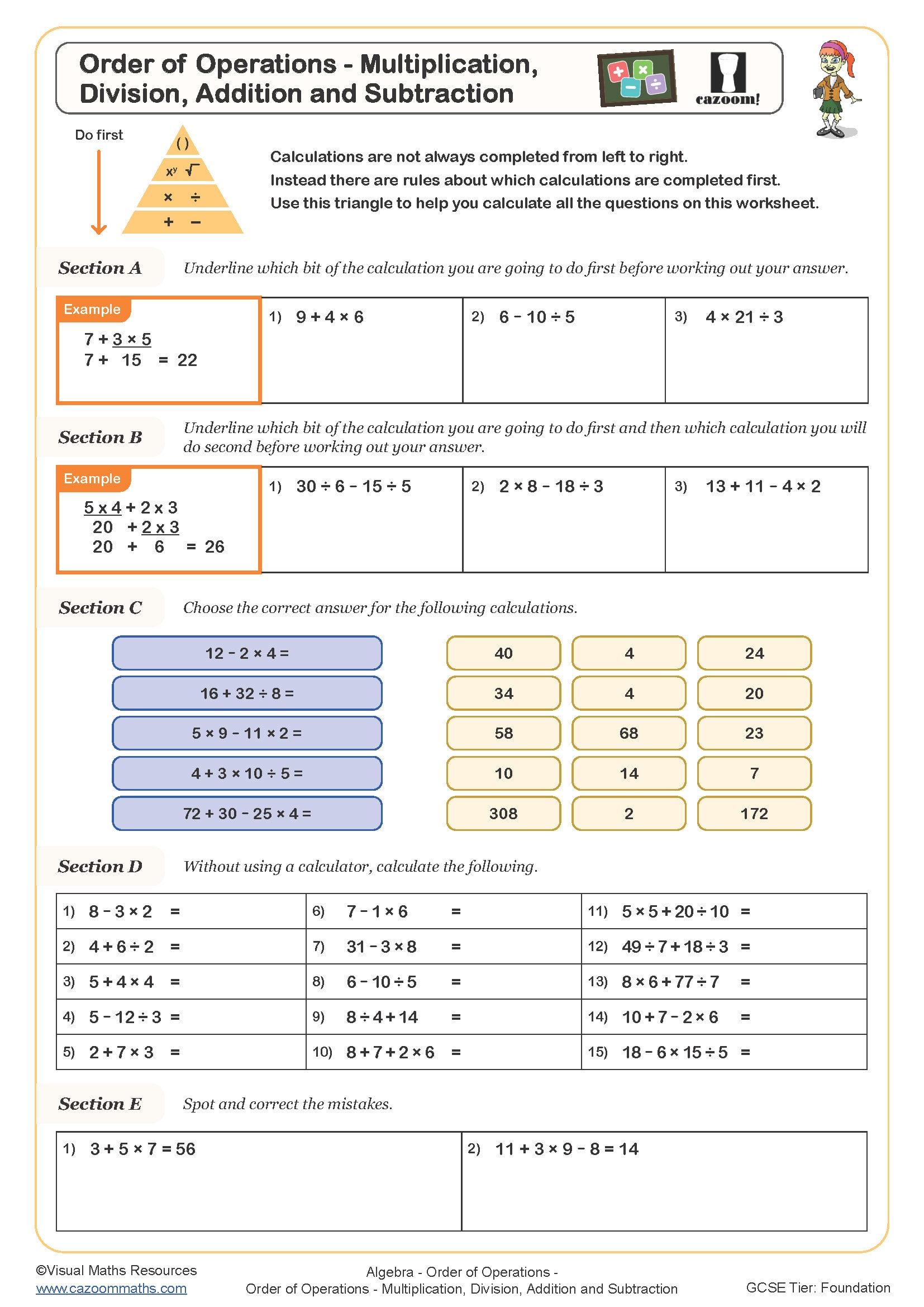
Order of Operations - Understanding Fractions as Division
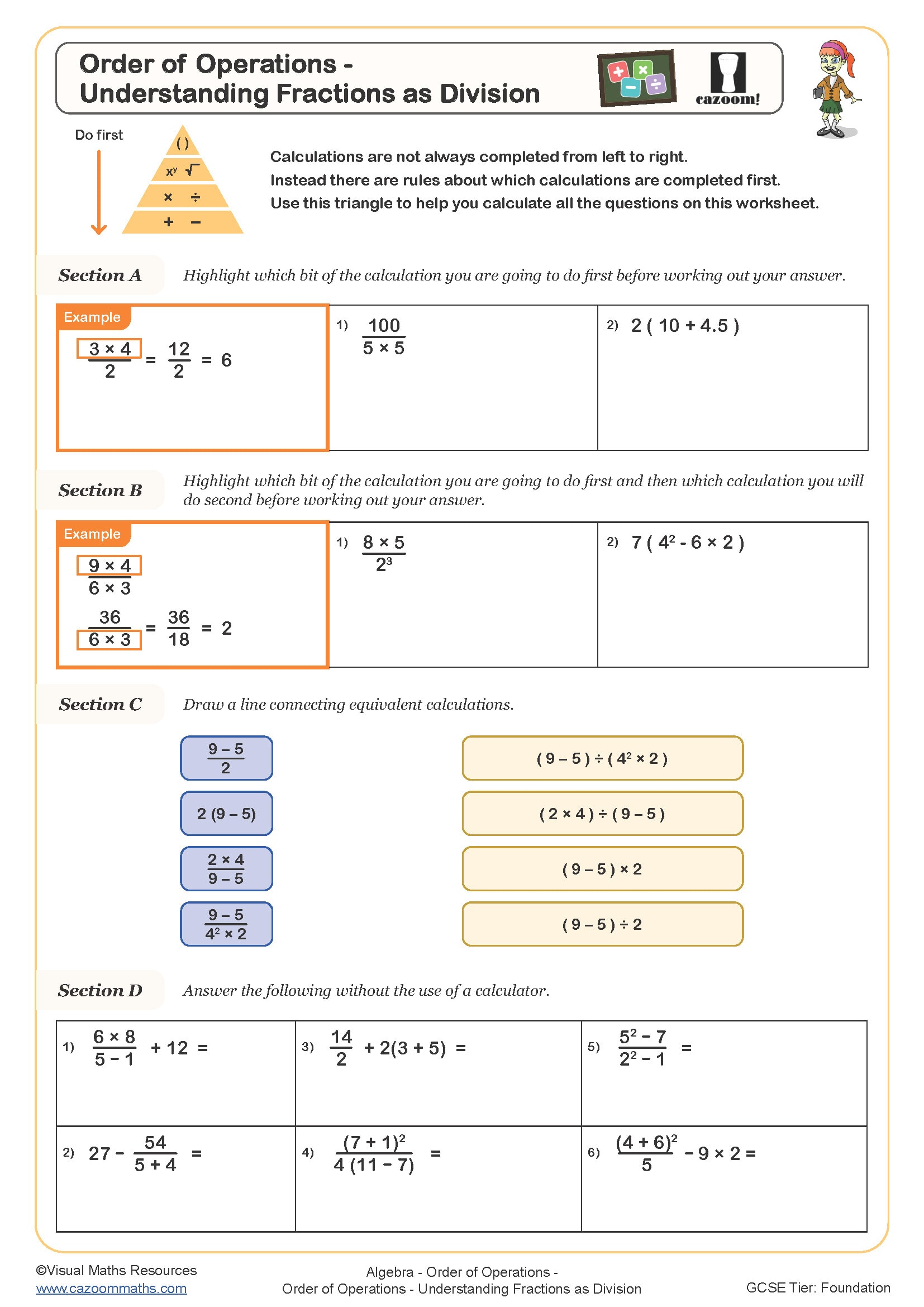
Order of Operations – Expression Trails

Order of Operations Worksheets That Actually Make BODMAS Click
Our Cazoom Maths expert team has observed that advanced algebra skills can be confusing for your young students as they transition from KS2 to KS3. However, without learning these basic algebra equations properly, your secondary school students will face difficulties. To make this learning process smooth and convenient, we have created our worksheets in ready-to-use, printable PDF format. Each of these worksheets includes separate answer sheets to facilitate an easy checking process. Download our maths activities right now to provide the extra help your young learners need!
Essential BODMAS Skills These Order of Operations Practice Sheets Cover
What is Order of Operations?
The order of operations tells us which calculations to do first in maths problems. Without these rules, everyone would get different answers. It's like having agreed traffic rules - everyone needs to follow the same system.
Why is it called BODMAS?
BODMAS is a memory trick. Each letter means:
• B - Brackets (first)
• O - Orders (powers like 2²)
• D - Division
• M - Multiplication
• A - Addition
• S - Subtraction
We follow this exact order. Some countries say PEMDAS instead, but it's the same rules.
Here is a quick example: 3 + (2 × 4)²
• Brackets: 2 × 4 = 8
• Orders: 8² = 64
• Addition: 3 + 64 = 67
We have included quite a lot in these order of operations worksheets PDF collections! Students begin with basic bracket calculations and simple multiplication. They progress through division and addition sequences. The more advanced sheets tackle negative numbers and decimal operations. Our most popular section deals with mixed operations using all BODMAS rules.
How Year 7 Students Build Mathematical Confidence Through Order of Operations
Teaching BODMAS can feel like an uphill battle sometimes. Secondary students often rush through calculations without following the sequence. That's where consistent practice makes all the difference. These order of operations worksheets for Year 7 standard help pupils develop systematic thinking. They learn to pause and identify the correct sequence. The confidence boost is remarkable once they master the pattern. Perfect for homework tasks, revision sessions, or cover lessons when needed.
Where Order of Operations Skills Pop Up in Real Learning
Order of operations appears throughout secondary mathematics. Algebra equations rely heavily on correct sequencing. Science formulae need a precise calculation order. Even computing and technology subjects use these principles. We've noticed students feel much more satisfied once they spot these connections everywhere:
• Algebraic expression simplification in Year 8
• Physics formula calculations for speed and acceleration
• Chemistry equation balancing and molar calculations
• Computer programming logic and mathematical functions
• Engineering and design technology problem-solving
• Business studies profit and loss calculations